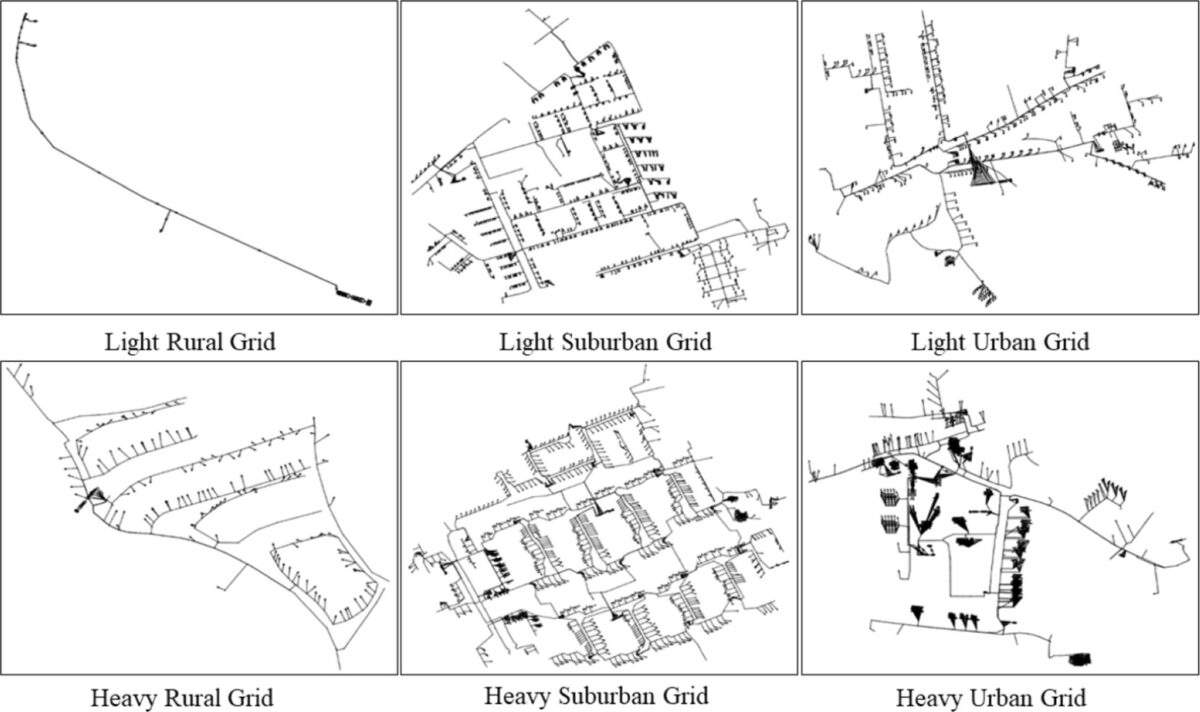The Netherlands currently faces serious grid capacity issues, as more and more renewable energy projects, especially solar, are going online. Dutch grid operators and power generation asset owners are now taking a range of actions to reduce grid load and prevent PV curtailment.
With this in mind, researchers from Delft University of Technology (TU Delft) have looked at the impact of different penetration rates of electric vehicles (EVs), heat pumps, and PV generation on the Dutch grid. They analyzed the effects of these technologies on over-loading and nodal voltage deviations in different distribution grids and seasons.
“The authors acknowledge that grid impact assessment studies are highly dependent on the investigated grid specifications and case study characteristics,” the research group said. “Therefore, the results should not be straightforwardly generalized for all case studies, that investigate different distribution grids. Nevertheless, this work can provide valuable insights, especially in the case of the Netherlands.”
The academics used real data from Dutch distribution grid operators and categorized the country's different distribution networks as light-loaded rural grids, heavy-loaded rural grids, light-loaded suburban grids, heavy-loaded suburban grids, light-loaded urban grids and heavy-loaded urban grids. Using computer software, they simulated grid conditions with only PV and EV penetration, or only PV and heat pumps. They also took into account the combined penetration of PV, heat pumps, and EVs.
They set the penetration rates for the simulation at 50%, 80%, and 100%.
According to their findings, Dutch suburban areas are the most vulnerable to increased penetration of all technologies. In summer and winter, the suburban grids showed an overloading of up to 800%. As for line overloading, both suburban grids are overloaded from 50% total penetration, with heavy suburban grids having lines exceeding 700% overloading.
“The light suburban grid sees a voltage drop under 0.9 per-unit (pu) even from 50% penetration (once), while also once voltage drops under 0.85 pu at 100% penetration,” the academic said. “Multiple undervoltage incidents are observed in the heavy suburban grid at all three penetrations. Reaching up to 0.65 pu. and 0.42 pu at 80% and 100% penetrations, respectively.”
In the rural grid results, the light configuration exhibited no transformer violations under any circumstance, while the heavy rural grid experienced transformer overload at a 50% penetration of combined PVs, heat pumps, and EVs. Line overloading was absent in the light rural grid but occurred in the heavy rural grid at an 80% penetration rate. Neither under nor overvoltage was observed in both rural grids.
Similarly, in the urban grids, there were no instances of under or over-voltage. During winter, the urban grids demonstrated a maximum transformer overload of 331% and line overload of 164% under full penetration. In the summer, also under 100% penetration, these figures were 258% and 125%, respectively.
“The more frequent use of heat pumps for heating/cooling provokes a higher grid impact overall, but the longer EV charging periods provoke more long-lasting violations,” the researchers said. “The results have also been compared with results by aggregated data from databases, showing that bottom-up approaches present more pessimistic results than top-down approaches. However, the main insights remain similar.”
The researchers presented their findings in “Assessing the grid impact of Electric Vehicles, Heat Pumps & PV generation in Dutch LV distribution grids,” which was recently published in Applied Energy.
“The higher insulation and the improvement of the energy label of the future buildings are highly recommended for the minimization of the grid impact by the future electric heating,” they said.
This content is protected by copyright and may not be reused. If you want to cooperate with us and would like to reuse some of our content, please contact: editors@pv-magazine.com.



Back in 2019 we did a similar study – but impacts could be seen @ 30% penetration. Sure better insulation helps – but only a bit. Of course the diff between our study and the Dutch study is that ours was undertaken by engineers that had previously design, built and operated urban, suburban and rural power networks. The academics point in the right direction – but the selection of 80% & upwards for penetration of EVs, PVs and HPs is unrealistic & as noted – very bad things start to happen at penetration above 30%. The solution is to use the re-purposed for H2 gas grid as the 2nd energy vector. Feel free to contact me if you are interested in the study – which we did ourselves – cos we were/are “curious cats”.